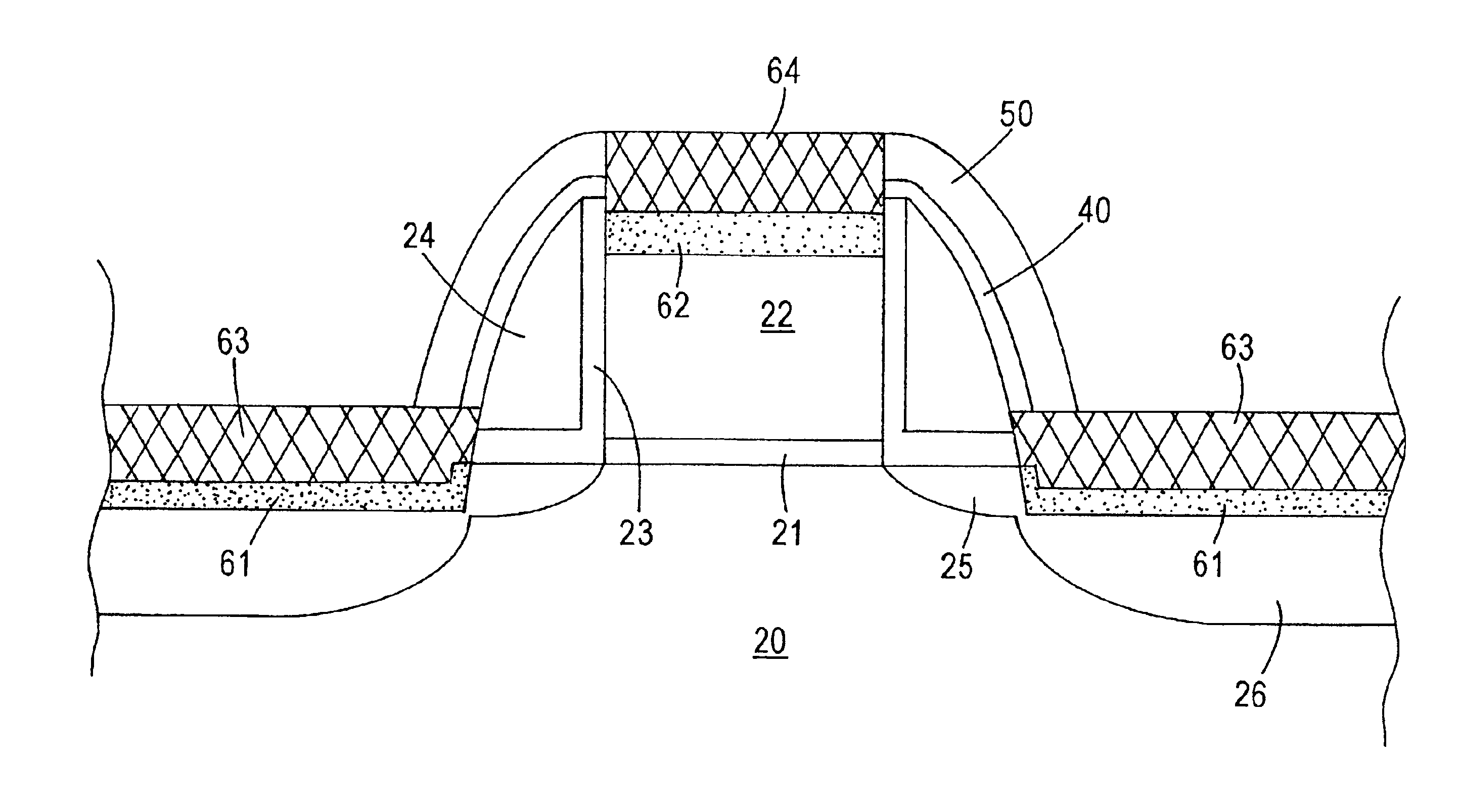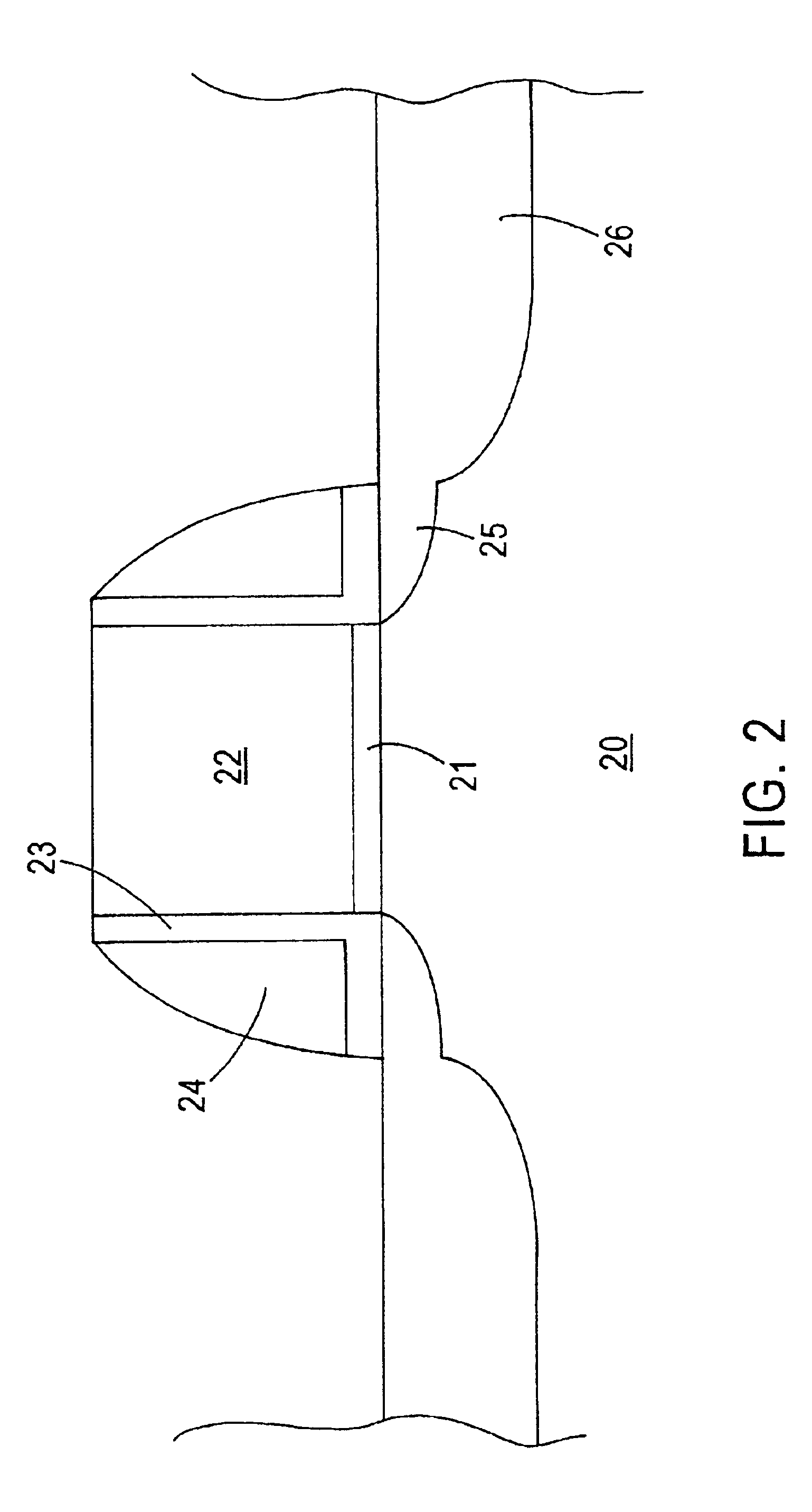Nickel silicide with reduced interface roughness
a technology of silicide and nickel, applied in the field of self-aligned silicide (salicide) technology, can solve the problems of inability to accurately form discreet devices on semiconductor substrates exhibiting the requisite reliability, more limiting circuit operating speed, undesired interface roughness, etc., and achieve the effect of reducing roughness and reducing roughness
- Summary
- Abstract
- Description
- Claims
- Application Information
AI Technical Summary
Benefits of technology
Problems solved by technology
Method used
Image
Examples
Embodiment Construction
The present invention addresses and solves problems attendant upon implementing conventional salicide technology employing nickel as the metal for silicidation. Such problems include the formation of an extremely rough interface between nickel silicide layers and underlying silicon, which roughness can lead to spiking and penetration into the source / drain regions, as well as spiking through a gate dielectric layer. Further problems include rapid consumption of silicon in the gate electrode which would destroy the known work function of polycrystalline silicon and highly reliable polycrystalline silicon / silicon oxide interface. Additional problems include nickel silicide bridging along the surface of silicon nitride sidewall spacers between the nickel silicide layer on the gate electrode and nickel silicide layers on associated source / drain regions. It is believed that nickel silicide bridging stems from the reaction nickel with dangling silicon bonds in the silicon nitride sidewall ...
PUM
 Login to View More
Login to View More Abstract
Description
Claims
Application Information
 Login to View More
Login to View More - R&D
- Intellectual Property
- Life Sciences
- Materials
- Tech Scout
- Unparalleled Data Quality
- Higher Quality Content
- 60% Fewer Hallucinations
Browse by: Latest US Patents, China's latest patents, Technical Efficacy Thesaurus, Application Domain, Technology Topic, Popular Technical Reports.
© 2025 PatSnap. All rights reserved.Legal|Privacy policy|Modern Slavery Act Transparency Statement|Sitemap|About US| Contact US: help@patsnap.com



